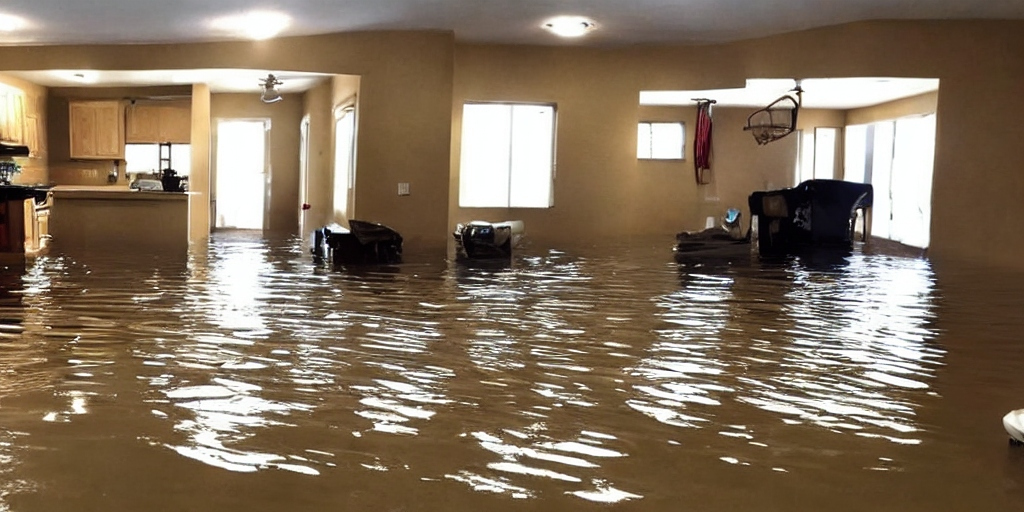Water damage can be a homeowner’s nightmare, striking without warning and causing immediate chaos. From burst pipes to severe storms, the consequences of water damage can be both immediate and long-lasting. In this guide, we’ll explore crucial aspects of dealing with emergency water damage and answer key questions to help you navigate through these challenging situations.
How do you know if water damage is serious?
Identifying the severity of water damage is crucial for effective and timely intervention. Signs of serious water damage may include visible mold growth, discolored walls or ceilings, and a musty odor. However, it’s essential to remember that not all signs are immediately apparent. Often, water damage can lurk behind walls or under flooring, making it imperative to inspect the affected areas thoroughly.
One reliable indicator of serious water damage is the presence of standing water. If you find any, it’s a clear sign that the situation requires urgent attention. Standing water not only poses an immediate threat to your property but can also become a breeding ground for mold and bacteria, leading to potential health hazards.
Also Read: Dealing with Emergency Water Damage: A Comprehensive Guide
Is water damage immediate?
Yes, water damage can be immediate and, in some cases, can escalate rapidly. Burst pipes, overflowing appliances, or sudden flooding from storms are examples of situations where water damage occurs with little warning. Immediate action is crucial in such scenarios to mitigate the extent of the damage.
For homeowners, having a plan in place for 24-hour emergency water damage is essential. Knowing whom to contact and understanding the first steps to take can make a significant difference in minimizing the impact of water damage on your property.
When should I worry about water damage?
Worrying about water damage is justified when you notice any of the following signs:
- Visible Mold Growth: Mold can start growing within 24-48 hours of water exposure. If you notice mold, it indicates that water damage has been present for some time.
- Unpleasant Odors: Musty or damp odors can be indicative of hidden water damage. If your home smells moldy or damp, it’s time to investigate.
- Discoloration: Stains or discoloration on walls, ceilings, or floors may signal water damage. Pay attention to any changes in your home’s appearance.
- Standing Water: As mentioned earlier, standing water is a clear and immediate cause for concern. It demands swift action to prevent further damage.
How do you deal with water damage in your home?

Dealing with water damage requires a systematic approach. Follow these steps to address emergency water damage effectively:
- Assess the Situation: Begin by assessing the extent of the damage. Identify the source of the water, whether it’s a burst pipe, leaking roof, or flooding.
- Ensure Safety: Safety should be a top priority. If there’s standing water, turn off the electricity and avoid contact with the water until you can confirm it’s safe to do so.
- Call for Professional Help: Contact professionals specializing in water damage cleanup. Timely intervention by experts is crucial for minimizing long-term damage.
- Document the Damage: Take photographs or videos of the affected areas. This documentation can be valuable for insurance claims.
- Start the Cleanup Process: Begin the cleanup process as soon as it’s safe to do so. Remove excess water using pumps or wet-dry vacuums and set up fans and dehumidifiers to aid in drying.
- Consider Servpro for Restoration: If you’re looking for a reliable restoration service, consider Servpro water damage restoration. Their expertise can play a pivotal role in restoring your property.
- Follow Water Damage Restoration Protocol: Adhering to a proper restoration protocol is essential. This includes thorough drying, sanitization, and repairs to prevent further issues.
Also Read: The Comprehensive Guide to Flood Water Removal Services
Conclusion
being prepared for emergency water damage is key to minimizing its impact on your home. By understanding the signs of seriousness, taking immediate action, and following a structured approach to cleanup and restoration, you can navigate through these challenging situations with greater ease. Remember, a quick response can make all the difference in preserving your property and minimizing the associated costs.










